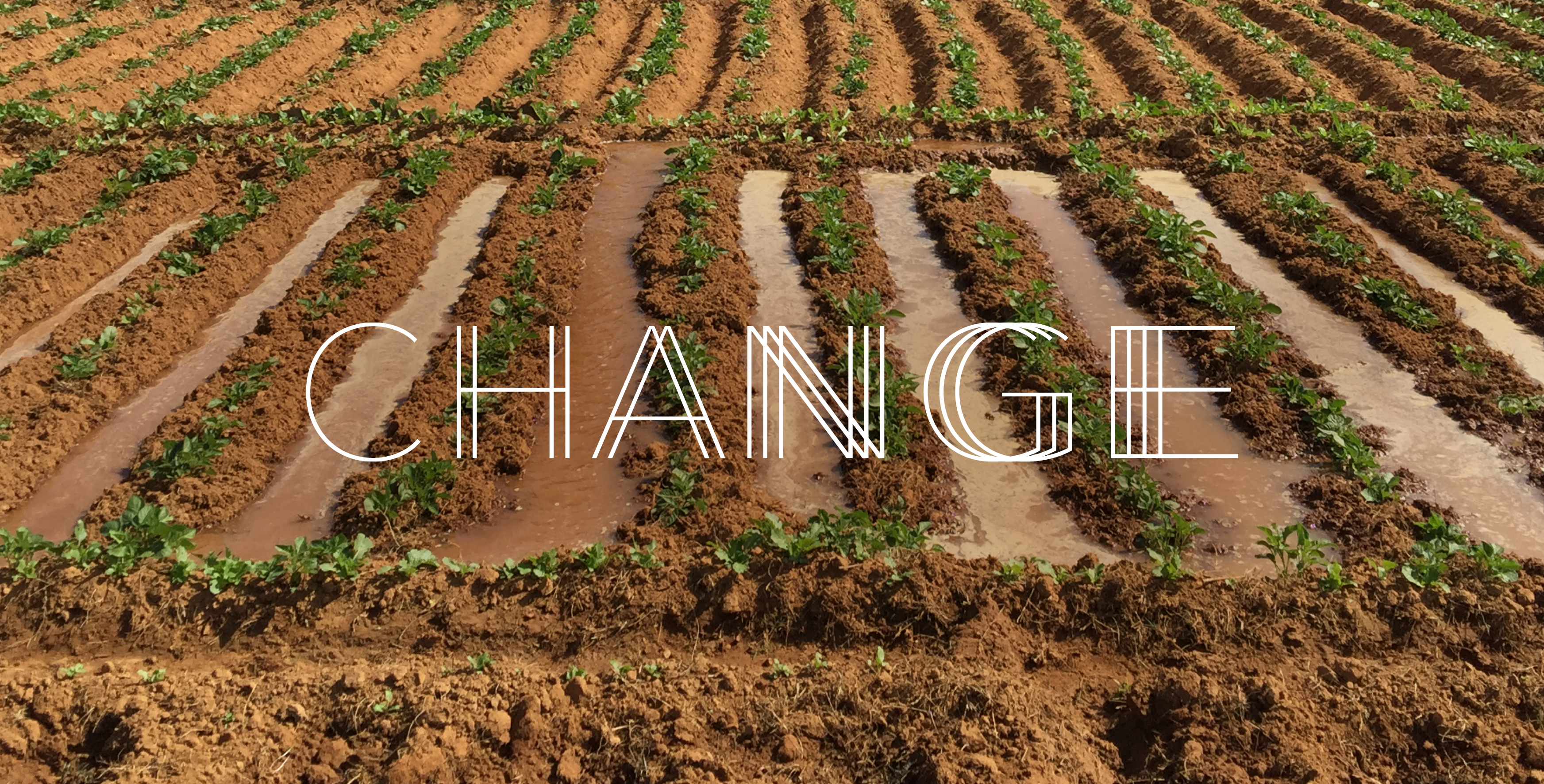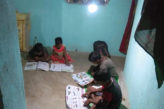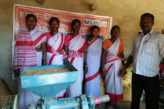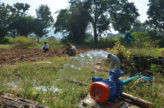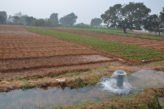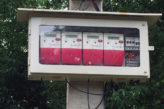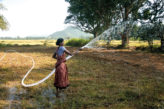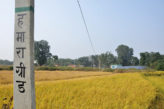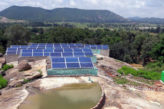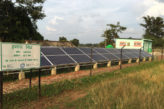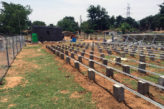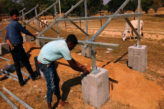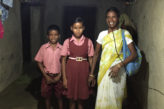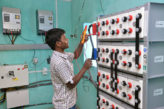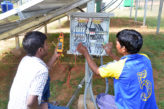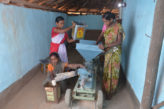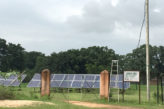RENEWABLE ENERGY FOR RURAL COMMUNITIES
We install solar mini-grids and sell the energy for domestic and productive uses in rural India. We support these communities to build financially and environmentally sustainable businesses from the energy produced. The villages experience positive environmental, social and financial outcomes such as a reduction in CO2 emissions and increased household incomes. Women spend less time on domestic chores and children study longer under healthier lighting.
Click below to access our 2018 report
Green-house gas emissions have reduced 1054 tonnes per year

The Challenge
240 million people, or 20% of the population, remain without access to electricity in India. The majority –220 million people – live in rural areas.
Fossil fuel-based approaches to electrification are ineffective and increase CO2 emissions. Shortfalls in payments, poor metering and inefficient billing lead to a downward spiral of poor performance, inadequate investment, high transmission and distribution costs and regular power outages from distribution companies.
In spite of poor access to energy, India is the third-largest country in volume terms of CO2 emissions in the world, behind only China and the United States.
The Solution
Decentralised village-level mini-grids based on renewable energy allow rural agricultural communities to access modern forms of energy in a manner that raises their incomes and reduces CO2 emissions to deliver proven social, environmental and financial benefits.
Mlinda is installing scalable and replicable model of decentralised village grids to increase access to energy. Mlinda had installed 39 such grids in 40 villages by March 2020 and is on track to reach 49 grids in 50 villages by March 2021. They meet domestic as well as agricultural needs. The grids are metered, provide flexibility to pay according to their individually determined needs. Confident that they only pay for what they consume, users are willing to invest in energy to increase their income and well-being.
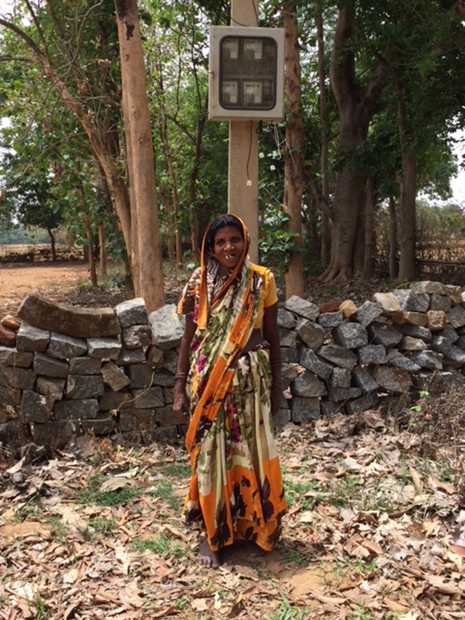
© Mlinda
The GDP per capita has increased by 7.3 %

The Method
Mlinda has designed a village selection survey based population size and distribution, the presence of the grid, water sources, ability and willingness of households to pay, existing and potential demand for agricultural applications, availability of land. Mlinda also engages with the community to foster trust and ensure deep understanding of community needs.
We have designed a modular grid system based on solar power with diesel for back-up and peak management. The grid can power single and three phase electrical devices, adapted to a range of agricultural and domestic devices. The three phase loads, used primarily for income generating opportunities such as agricultural activities, operate during the day. This reduces the grid’s reliance on batteries for energy storage.
Mlinda has field engineers as well as operators and community link workers assigned to the villages to ensure repair and maintenance issues are addressed promptly. These workers also collect recharging fees for existing meters and connect new households to the grid.
Mlinda has a business development team present in the region dedicated to supporting villagers to make the transition from diesel and kerosene equipment to electrical devices. This team also provides marketing support to the community to develop new business opportunities such as processing oils, wheat or rice production.
The objectives
Energy Access
- By 2020 Install decentralise mini-grids across 50 villages reaching 40,000 people in Jharkhand State, North Eastern India.
- Provide 24 hr / 7 days a week, reliable and affordable energy to connected households
- Provide single phase energy for domestic needs such as lighting and small water pumps
- Provide 3 phase energy for agricultural businesses such as oil processors, wheat millers, rice hullers and larger water pumps for irrigation.
Impact so far
- Mlinda commissioned an independent impact assessment of our first 24 mini-grids operating in 25 villages (two villages share a mini-grid). Thanks to their research methods, we can attribute improvements directly to the impact of our mini-grids. The results are encouraging:
- Micro-enterprise revenues went up by 28%
- Green-house gas emissions have reduced by 1054 tonnes pa
- Household incomes increased on average by 23%
- 115 new local jobs have been created
- The GDP per capita has increased by 7.3 %
- Currently over 1,250 farm, non-farm and institutional loads run on our mini-grids.
- Women spend less time on chores and more time on productive activities.
- Children can study for longer periods under less harmful lighting
The Milestones

Pilot
Between 2012 and 2016 Mlinda installed 300 pico and micro-grids and began designing mini-grids, installing 300 kWp of energy in two states in India covering 2200 homes, 365 shops and 3 schools saving 450 tons of GHG emissions per annum.

Launch of mini-grids
Building on lessons learnt from the pico-grids, in 2017 Mlinda embarked on a programme to develop and scale the mini-grid programme. Mlinda had 8 mini-grids across 9 villages by 2017, connected 1000 families and empowered 273 agricultural businesses, converting water pumps and other agricultural diesel devices used in farming and production.

Expansion
By March 2020, we had installed 39 such mini-grids, connected 4918 families, over 27,000 individuals and empowered 1250 small scale entrepreneurs with solar powered devices such as pulverisers, rice hullers, milling machines, grain grinders, oil expellers, sewing machines and other devices.

Scale
By spring 2021, we intend to have installed mini-grids in 50 villages, reaching over 6000 families, 33000 individuals, saving over 35 Tonnes of CO2 per village and increasing incomes by over 20%.
We hope to scale further and work with partners to replicate the model so that rural producers in can continue to increase their incomes without increasing green-house gas emissions.
Mlinda Charitable Trust
Covid 19
2020 -21 Mlinda Charitable Trust has been carrying out activities in Gumla District, Jharkhand during the past year to support local people combat the impact of the Covid-19 pandemic.
Activity
Impact so far
 Activity: Distribute cloth face masks
Activity: Distribute cloth face masks Activity: Awareness training on Covid-19 appropriate behaviours.
Activity: Awareness training on Covid-19 appropriate behaviours. Activity: Working with village councils to mobilise and encourage take up of the vaccine in key groups.
Activity: Working with village councils to mobilise and encourage take up of the vaccine in key groups. Activity: Maintain an uninterrupted energy to Mlinda villages to enable farming activities and livelihoods to be sustained.
Activity: Maintain an uninterrupted energy to Mlinda villages to enable farming activities and livelihoods to be sustained.
